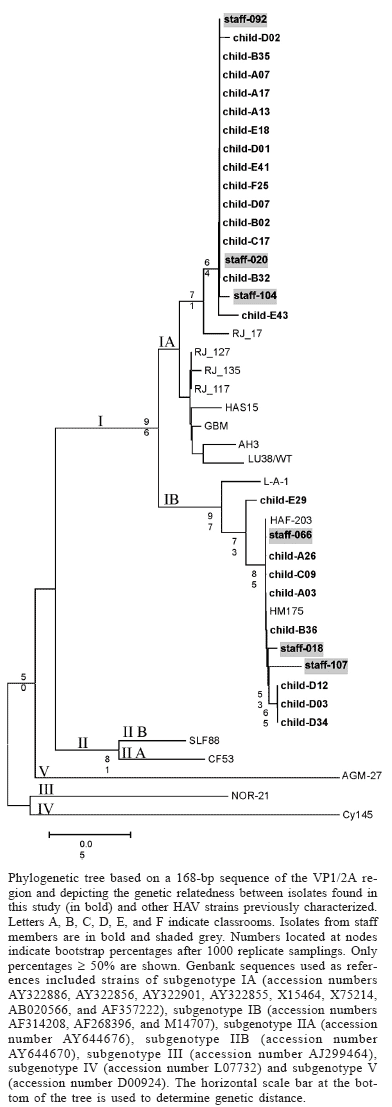A cross-sectional study was conducted in order to identify hepatitis A virus (HAV) serological markers in 418 individuals (mean age, 16.4 years; range, 1 month-80 years) at a public child care center in Rio de Janeiro, Brazil, as well as to analyze risk factors and determine circulating genotypes. Serum samples were tested using an enzyme immunoassay. Reverse transcription polymerase chain reaction (RT-PCR) was used to detect and characterize HAV RNA, and sequencing was performed. Anti-HAV antibodies and IgM anti-HAV antibodies were detected, respectively, in 89.5% (374/418) and 10.5% (44/418) of the individuals tested. Acute HAV infection in children was independently correlated with crawling (p < 0.05). In 56.8% (25/44) of the IgM anti-HAV-positive individuals and in 33.3% (5/15) of the IgM anti-HAV-negative individuals presenting clinical symptoms, HAV RNA was detected. Phylogenetic analysis revealed co-circulation of subgenotypes IA and IB in 93.3% (28/30) of the amplified samples. In present study, we verify that 79% (30/38) of children IgM anti-HAV-positive were asymptomatic. In child care centers, this asymptomatic spread is a more serious problem, promoting the infection of young children, who rarely show signs of infection. Therefore, vaccinating children below the age of two might prevent the asymptomatic spread of hepatitis A.
hepatitis A antibodies; hepatitis A virus subgenotypes IA and IB; hepatitis A; risk factors; Brazil



